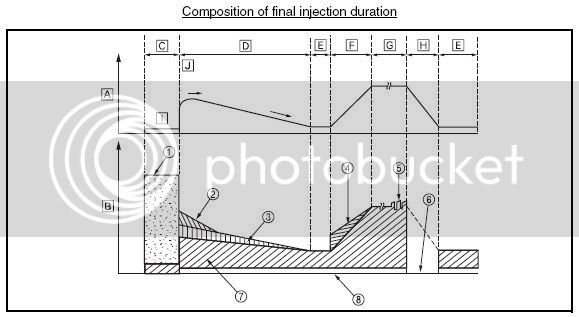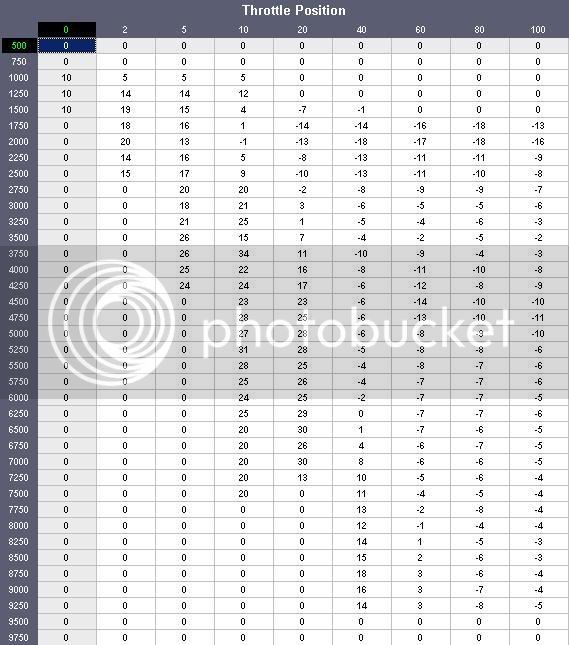My question is, for a bike without these performance enhancing add-ons would a PC III help my bike run better/smoother? It is not that it runs badly now but I do like it when I can have my toys running as good as I can. What exactly will one of these units do for my bike?
Yamaha hasn’t done the best job of driveability with the FJR FI system; however, it does meet emission standards well into the future. In addition to allowing the owner/user to compensate for altered intake & exhaust systems, the PCIII will address driveability issues for owners that have problems (not all do, some don’t notice, some don’t care).
I have installed a PCIII for driveability issues, in my case to moderate wicked surging. This is not a perceived issue, I have made actual measurements that show engine vacuum, rpm and fuel pressure fluctuations that coincide with my passengers head moving back and forth, the headlight bouncing up and down and me experiencing what I would call surging. I’ve telemetered up my bike with gauges and meters Velcroed to the bars, then I have ridden with them so I could observe what is happening. I was hopeful that this would lead to a solution in place of masking the problem with a PCIII.
I have not been able to find one ‘smoking gun’ that is responsible for my surging. I have observed that by dampening the vacuum to the Fuel Pressure regulator in my Gen I takes a lot of the sting out of the surging. I would assume that my FJR is giving up a bit of throttle response in trade for this dampening but haven’t investigated it. Gen II fuel pressure is managed by a very different method.
Score: ionbeam -- 0; PCIII -- 1.
One glaring shortfall of the PCIII for the FJR is the inability to manage spark mapping. I would just love to be able to trim spark timing as well as fuel injection.
As far as the O2 sensor goes, it is operational in only very narrow situations, where "...the ECU applies minute corrections to the basic injection duration...to maintain a stoichiometric air-fuel ratio of 14.7:1". In the diagram below note that item 5 is the fuel trim based on the input from the O2 sensor. Also note area H/6 is the fuel CUTOFF/decel when the throttle is closed.
As far as the PCIII killing the environment – I’m not going there. I will note that in a counter intuitive way, leaning out the FI shot (to a point) will actually improve performance. Adding fuel until gas drips out the exhaust doesn’t lead to better performance in a street engine. Lean FI does have problems – surging, high combustion chamber temps and it creates hard to clean emissions. I’m sure that Yamaha is just as concerned about lean emissions as rich emissions.
The PCIII for the FJR is just a slight fuel trim device which also offers a way to soften throttle tip-in and lead-out edges. The FI shot timing and basic volume is still determined by the ECU, the PCIII just offers a way to optimize it for system variances and user intentions.
The following table is the PCIII 502 map for a European spec FJR with slip-ons. Note that at lower rpms and smaller throttle openings it significantly enriches the fuel trim. Rich mixtures tend to give a softer throttle response and when excessively rich leads to ‘bogging’. Now note that at higher throttle settings the PCIII actually leans out the FI shot. There are still significant operational areas where the PCIII simply is ‘hands off’. The low rpm enrichment leads to hydrocarbon emissions and the leaner throttle trim leads to nitrogen based emissions (vary broad interpretation, ignoring carbon and some NOx compounds).
Use the PCIII for driveability issues, to optimize engine performance and compensate for intake/exhaust modifications.
The O2 sensor instructs the ECU to make tiny fuel trims over a narrow range of engine temperatures and throttle settings.
While the PCIII will add fuel, it also trims out fuel under higher throttle settings.
Pollution? While you are setting at a traffic light you are getting zero mpg. When you start your FJR and don’t ride off, all you are doing is producing pollution for zero vehicle miles traveled. Every trip you take just for pleasure essentially adds unnecessary emission pollution and unnecessary fuel consumption. Even after fattening up the lower throttle FI percentage the FJR still remains a very clean machine.
JUST GO RIDE. 





